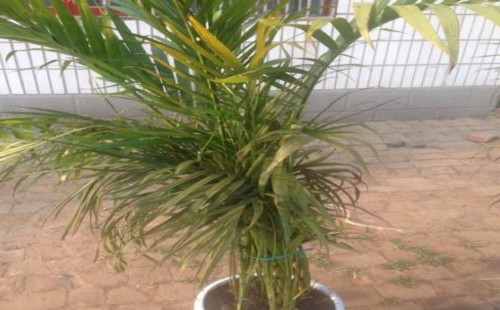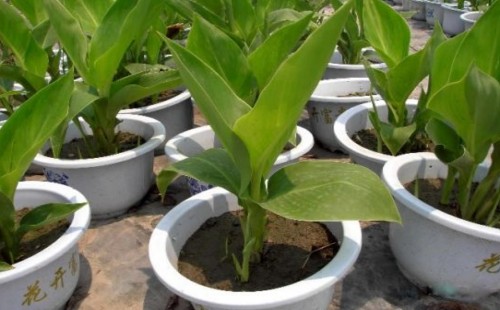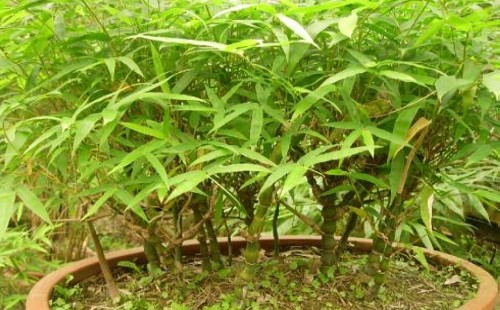What if the leaves of potted Phyllostachys pubescens turn yellow?
As a kind of foliage landscape plant, potted Phoenix tail bamboo can be placed not only in indoor living rooms and corridors, but also in public spaces such as offices, which can often play a good beautifying effect on the environment. Keeping green for a long time is its biggest viewing bright spot, so under the current concept of advocating green, we especially need to keep it green as much as possible.

Adding a touch of new green to the indoor environment can not only bring people a sense of comfort, make people work and live happily in a pleasant environment, but also bring a little freshness to the indoor air. Therefore, the daily maintenance and management work needs to be done well to keep it evergreen. If the maintenance and management work is not good enough, the leaves of Phyllostachys pubescens may turn yellow when the environment is uncomfortable. So, what about the yellow leaves of potted Phyllostachys pubescens?
As a potted green plant, the yellowing of leaves is more common, usually due to improper maintenance and management. Therefore, we need to start from the daily maintenance management means to investigate, find the cause of the problem, and then carry out targeted remediation, so as to recover the loss as soon as possible. In view of the yellowing of the leaves of the potted Phoenix tail bamboo, the editor summarized some common causes and countermeasures, hoping to be helpful to you.
The light is too strong
Although Phyllostachys pubescens also likes to receive plenty of light, especially in winter. However, it is more afraid of strong direct sunlight for a long time, especially in the hot summer sun, otherwise it will be burned and scorched, and in this case the leaves will turn yellow because of too much water loss. In view of this situation, the potted plants should be moved to a cool place or other shading measures should be taken immediately.
Second, lack of light
Contrary to the excessive light, if the potted Phyllostachys pubescens is placed indoors in a shady environment for a long time, it may not be able to carry out normal photosynthesis due to lack of reasonable light for a long time, resulting in yellowing leaves. In this case, we should gradually increase the light to promote photosynthesis, while the light is too strong to properly shade, so that the plant can slowly return to the normal growth state, let the leaves green again.
Third, too much watering
If the potted Phoenix tail bamboo is watered too much, or the drainage effect in the basin is poor, it may cause stagnant water in the basin or the soil in the basin is too wet and let the leaves appear water-yellow phenomenon. The main reason for the originality is that the young leaves germinated are relatively weak, yellow and weak in growth. So we need to drain immediately and loosen the soil and grooves while improving ventilation to ensure that the excess water in the basin is quickly evaporated or removed.
Fourth, long-term water shortage
When the potted Phyllostachys pubescens is not replenished with water for a long time, the leaf tip will turn yellow because the potted soil is too dry, accompanied by leaf loss. In this case, we just need to water it in time. However, it should be noted when watering, do not suddenly water after a long dry, otherwise not only not conducive to the improvement of yellow leaves, leaf loss phenomenon, but also may lead to more growth problems. Therefore, immediate watering is also a gradual process.
5. Excessive fertilization
Excessive fertilization caused the phenomenon that the leaves of potted Phyllostachys pubescens turned yellow and lost their luster, which was mostly shown as fat yellow. Generally speaking, the concentration of fertilizer is too high and the fertilizer efficiency is too strong, which is caused by the root burning phenomenon. Therefore, we need to pour water in time to dilute the fertilizer in the basin soil and discharge it from the bottom outlet at the same time. At the same time, improve the ventilation effect to avoid the basin soil is too wet.
VI. Lack of nutrients
When potted Phyllostachys pubescens does not get enough nutrients to maintain its growth for a long time, the leaves often turn yellow due to lack of nutrition, mainly because the tender leaves appear light yellow. Therefore, we need to take the way of topdressing for its proper intake of nutrients necessary for normal growth. However, in the process of fertilization, the concentration must not be too high, otherwise it will produce fertilizer damage, resulting in the phenomenon of yellow leaves, thus aggravating the problem of yellow leaves.
For most potted flowers and plants, when there is a yellowing of leaves, it is generally caused by the above 6 reasons. Therefore, potted Phyllostachys pubescens is no exception, as long as we conduct investigation according to the above 6 points and take corresponding countermeasures in time after finding the reasons, we can often improve the situation, or even eradicate it in time.
Time: 2019-05-30 Click:
- Prev

Why don't canna blossom?
Canna prefers a warm and humid growing environment, and as long as water and fertilizer are supplied in time, it will not only grow luxuriantly and blossom, but also greatly improve its ornamental ability as a potted plant. The flowers of canna are not only rich in colors and bright colors, but also very large and charming.
- Next

What if the leaves of potted bamboo are dry and yellowed?
Potted Phyllostachys pubescens is often of ornamental value for its elegant plant type and emerald green leaf color. However, once the leaves become dry or yellowed, it will greatly reduce the ornamental value. Obviously, when this happens, there must be something wrong with the growth of the plant.
Related
- Fuxing push coffee new agricultural production and marketing class: lack of small-scale processing plants
- Jujube rice field leisure farm deep ploughing Yilan for five years to create a space for organic food and play
- Nongyu Farm-A trial of organic papaya for brave women with advanced technology
- Four points for attention in the prevention and control of diseases and insect pests of edible fungi
- How to add nutrient solution to Edible Fungi
- Is there any good way to control edible fungus mites?
- Open Inoculation Technology of Edible Fungi
- Is there any clever way to use fertilizer for edible fungus in winter?
- What agents are used to kill the pathogens of edible fungi in the mushroom shed?
- Rapid drying of Edible Fungi

